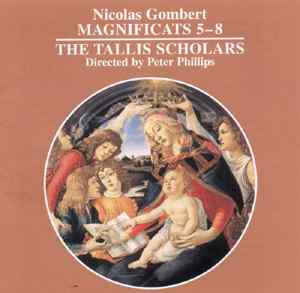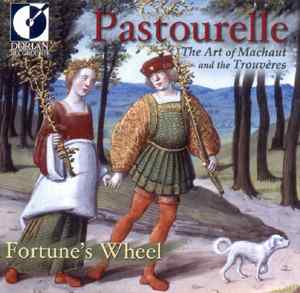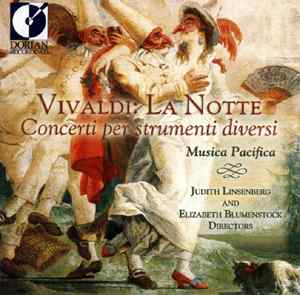For a few words about my
reviewing process and preferences, please see the introduction to
Classical Review #36.
The title of this enticing showcase of 20th/21st
century American music refers to the opening work, 36-year old American
composer Christopher Theofanidis' glowing Rainbow Body;
it also serves, according to conductor Robert Spano, “as a rich metaphor
for the varied tapestry of American music.”
Regardless of multiple entendres, this disc deserves
your attention. Each of its four offerings is a winning orchestral
showpiece, tonally accessible and bursting with color. What especially
pushes the disc to the top of the pile is Telarc's state-of-the-art DSD
recording process, mighty impressive in standard two-channel format, and
potentially mind-blowing in just-available high-resolution, surround sound
SACD. The Atlanta Symphony's strings become a bit strident in forte
passages, but that seems far more due to the acoustic and playing than to
recording techniques.
Christopher Theofanidis (b. 1967) wrote Rainbow
Body under the influence of medieval
mystic Hildegard von Bingen's chant, “Ave Maria, O auctrix vite” (Hail
Mary, source of life). As with much of Hildegard's music, Tehofanidis'
composition has an elevated, spiritual feel to it, with luminescent waves
of rainbow colors spiraling outwards as though generated in a cathedral
setting. I'm far more swayed by the opening and closing of the piece than
the dramatic middle, which seems out of place; nonetheless, there's much
here to enjoy.
Samuel Barber (1910-1981) wrote his 20-minute
Symphony No. 1, Op. 9 in 1936, revising it in 1942. It's filled with
dramatic outbursts that, while sounding “modern,” safely remain within the
confines of the late Romantic tonal idiom. Though conductor Marin Alsop
and the Royal Scottish National Orchestra (Naxos) do the better job of
highlighting the symphony's brief tender interludes, Spano more deeply
underscores the work's restless churning. This may in part be due to the
engineering; Naxos' vaunted 20-bit sound pales besides Telarc's vaunted
sonics.
The Suite from Appalachian Spring,
among the most famous works by Aaron Copland (1900-1990), derives from his
ballet score for the Martha Graham Dance Company. Its initial version,
which debuted at the Library of Congress in 1944, employed just 13
instruments. Re-scored as a suite for full orchestra, it rightly won the
1945 Pulitzer Prize for music. Appalachian Spring's
beautiful variations on the Shaker Melody “Simple Gifts” (‘Tis the gift to
be simple; ‘Tis the gift to be free…) are as unforgettable as Ralph
Vaughan Williams' Fantasia on “Greensleeves.”
It remains one of music's great mysteries that
someone of “outlaw” cultural status who began his career writing atonal
and dissonant works went on to write music so quintessentially American
that his Fanfare for the Common Man
was appropriated as campaign music by the Republican Party. Not
surprisingly, two of the work's finest interpreters, Leonard Bernstein
(Sony and DG) and Michael Tilson Thomas (RCA/BMG), were friends of Copland
who share his minority status. No conductor has captured the magic of the
work's opening vista like Bernstein, but Spano's sonics and the beautiful
playing of the Atlanta Symphony make this version highly competitive.
Jennifer Higdon (b. 1962) wrote the program's closing
work, Blue Cathedral, while
imagining a journey through a glass cathedral in the sky. Composed for the
75th anniversary of Philadelphia's Curtis School of Music
(where Barber taught for a time) the work “commemorates living and passing
through places of knowledge and of sharing and of that song called life.”
Higdon's syntax may not be great, but her music is quite beautiful. The
work starts slowly, builds to a tremendous climax, and ends with some
marvelous, tinkling effects that seem suspended in space. The piece, which
I've recently used to test equipment at HE 2003, provides a luminous
conclusion to a most enjoyable disc.

|
 |
|
Nicolas Gombert: Magnificats 5-8
The Tallis Scholars
Gimell CDGIM 038
|
|
0 |
5 |
|
Performance |
 |
|
Sonics |
 |
|
The great achievement of Renaissance composer Nicolas
Gombert (c.1495-c.1560)
springs directly from his criminal conduct. In 1526, Nicolas Gombert
joined the chapel of Charles V as a singer; three years thereafter, he
became the master of the choirboys of the Imperial Chapel. According to
Gombert's contemporary, a physician named Girolamo Cardano, Charles V
ordered Gombert imprisoned in a galley after the composer had been
convicted of molesting a choirboy in his care. The composer secured his
release by writing his eight Magnificats. Considered his crowning
compositional achievement, Gombert's last major works not only sprung him
from imprisonment but also enabled him to retire to a benefice in Tournai.
This second release in Peter Phillips' Gramophone
Award winning Tallis Scholars'
Gombert project features his final four Magnificats; the first four were
released on CDGIM 037 at the start of 2002. Gombert's writing is so
compositionally dense that, the better the sound system, the more one can
appreciate his writing. Preferring the bass and tenor voices, he managed
to pack five- and six-part harmonies into a relatively limited span of a
few octaves. Often this involved incorporating a number of dissonances,
which the Tallis Scholars interpret for expressive effect. A boombox may
make hash of this, but those blessed with good equipment can hear how
skillfully Gombert negotiated his harmonies.
Gombert set even-numbered verses to polyphony and
left the odd-numbered ones in chant. Voices increase from four to five or
more as the verses proceed. Magnificat 6 is the most substantial
polyphonically, while Number 8 is the only one to employ doubled altos in
the SATB choir. The Tallis Scholars insert Magnificat antiphons before and
after each Magnificat to help establish the modality of the different
chant tones.
One could go on and on about technical matters, but
the value is ultimately in the listening. Gombert wrote beautiful and
intriguing music, quite different from the polyphony of Josquin des Prez,
Lassus, Isaac, and other Flemish composers of the period. Because his
writing favors lower voices, and thus soars less, it can seem a bit
forbidding at first. But those who turn down the lights, kill the cell
phone, and give the Tallis Scholars their full attention will be amply
rewarded.

BAY AREA EARLY MUSIC VIRTUOSI ON DISC
The Bay Area, along with New York City,
Boston, and Amherst, hosts the United States' largest community of early
music performers and lovers. Such major Bay Area ensembles as Philharmonia
Baroque Orchestra, Magnificat, and American Bach Soloists are filled with
superb instrumentalists and vocalists who perform second duty in other
music organizations ranging in size from the San Francisco Opera Orchestra
to Musica Pacifica.
Among the most prolific of these instrumentalists is
Shira Kammen. A UC Berkeley graduate who plays vielle, harp, and fiddle
and also lends her voice to many performances was for many years a member
of Ensemble Alcatraz, Project Ars Nova, and Medieval Strings. She has also
worked with Sequentia, Hesperion XX (now Hesperion XXI), the Boston
Camerata, and the King's Noyse, and is the founder of Class V Music, an
ensemble dedicated to performance on river rafting trips. Kammen who has
lent her talents to over 40 recordings (see
www.shirakammen.com), currently
performs with several new music organizations: a medieval ensemble,
Fortune's Wheel; a new music group, Ephemeros; an eclectic ethnic band,
Panacea; and Trouz Bras, a band devoted to the dance music of Celtic
Brittany.
As a member of
Fortune's Wheel, Kammen's vielle, harp, and voice feature prominently here.
|
 |
|
Pastourelle: The Art of Machaut and the Trouvères
Fortune's Wheel
Dorian DOR 93245
|
|
0 |
5 |
|
Performance |
 |
|
Sonics |
 |
|
Recorded with natural resonance at a favored
recording venue for early music groups, Mt. Holyoke College's Abbey
Chapel, Pastourelle offers a
sampling of gifts from France's greatest medieval composers and lyricists.
If there is a theme for this disc, it derives from the words of the man
Fortune's Wheel's members consider the greatest medieval French composer,
Guillaume de Machaut (c.1300-1377), who wrote, “Music is that science
which makes us laugh, and dance, and sing.”
Of the disc's 20 tracks, eight are by Machaut, three
by Adam de la Halle (c. 1245-c.1288), and one (“Chanson legière”) by Conon
de Bethune (c.1160-1219). As is often the case with early music, the rest
are by the ubiquitous Anon.
Some of these works are written in dance forms such
as the caroles, with texts that
evoke the joys of dancing outdoors. Others are pastourelles,
which tell the tales of courtship and courtly love between maid and
knight. Poetry and lyrics, which often speak of suffering and unrequited
love, are quite refined. The music has the customary hollow sound that we
often associate with medieval writing – think the harmonies of Gregorian
chant transposed to a secular context, with lighter textures and love of
flesh replacing love of God – with melodies both sophisticated and varied.
Because Machaut composed monophonic melodies at a
time when polyphony (writing for multiple voices singing different melodic
lines simultaneously) was becoming the order of the day, he has been
called “the last of the trouvères.”
The master wrote in the three great formes fixes
of trouvère rhyme-schemes:
the ballade, the
rondeau, and the virelai.
The disc contains examples of each; a special standout is De
Fortune, a ballade
which invokes the goddess Fortune.
Since so much of the instrumental repertoire from
this period was passed down by oral tradition, and thus constantly subject
to improvisation, the particular sensibilities of Fortune's Wheel's
musicians are crucial to the success of the performances. Happily, both
musicians and the recording itself shine. There is an elegance and
tastefulness to the playing that does full justice to the subject matter.
Enjoyment is enhanced by the clarity and sense of space that surround
voice and instruments. Whether this disc is played in the background or
appreciated in a state of deep contemplation, it provides almost 70
minutes of unalloyed pleasure.

|
 |
|
Vivaldi: La Notte
Conceti per strumenti diversi
Musica Pacifica, Judith Linsenberg and Elizabeth Blumenstock,
directors
Dorian 93252
|
|
0 |
5 |
|
Performance |
 |
|
Sonics |
 |
|
While Antonio
Vivaldi's (1678-1741) is a well-worn household name among classical music
listeners – ask the man on the street if he enjoys classical music, and he
will invariably respond, “Well, I like Vivaldi's Four Seasons” --
his reputation derives from an immense body of skillfully crafted,
immensely satisfying compositions. Even though the man wrote no less than
220 violin concertos, plus others for flute, recorder, oboe, bassoon,
etc., not a note on this disc sounds mechanical or less than inspired.
Musica Pacifica,
in existence since 1990, draws its members from the world-class
Philharmonia Baroque Orchestra. The two directors are established
virtuosi: Blumenstock is among the most sought after baroque violinists in
the country, with a tone consistently round and sweet, while Linsenberg
plays recorder with extraordinary speed and wealth of nuance. Add in
Gonzalo X. Ruiz on oboe, Marilyn Boenau on bassoon, David Morris on cello,
Michael Eagan on archlute, and Charles Sherman on harpsichord and you have
seven musicians who could conceivably sustain solo careers if personal
inclination and 21st century marketplace economics were
sufficiently realigned.
The ensemble's
five previous CD releases have each been chosen a “CD of the Month” by
German's early music journal Alte Musik Aktuell. Their 2-CD set of
Marais (Virgin Veritas) received 5 stars from Europe's Goldberg
magazine, their Telemann (Dorian) won Chamber Music America and WQXR's
2003 Record Award, and their Mancini (Dorian) was cited as “Noteworthy” in
the 2000 International Antionio Vivaldi Awards for Italian Early Music in
Venice. Such European accolades are rarely granted to American ensembles.
This disc will
undoubtedly enhance Musica Pacifica's reputation. Each instrumentalist
shines in exposed passages, exhibiting a rhythmic vitality and variety of
shading that deepens appreciation for Vivaldi's extraordinary melodic
freshness. Because the composer seems to have considered the baroque flute
and alto recorder interchangeable, the ensemble offers several flute
concertos performed on recorder. Similarly, following Vivaldi's lead, the
violin part on Concerto in G Minor, La Notte, RV 104 is played by
oboe, as is one of the recorder solos in the first movement of the
Concerto in D Major. The results highlight the colors of authentic
instruments, which are far more distinctive than their modern
counterparts. Marvelous playing, highly recommended.

|
 |
|
Teatro Imaginario
Scarlatti Sonatas
Patrice Matthews, harpsichord
Vgo Recordings, Inc. VG1007
|
|
0 |
5 |
|
Performance |
 |
|
Sonics |
 |
|
This auspicious
debut recording of Domenico Scarlatti's (1685-1757) amazing harpsichord
concertos certainly causes one to sit up and take notice. The composer,
son of opera composer Alessandro Scarlatti, began his career as an organ
prodigy. After his dazzling playing learned him the position of maestro
di cappella at the Vatican, he left Rome for Portugal, where at age 34
he entered the service of the King of Portugal. Scarlatti subsequently
moved to Madrid to serve as music master to the King's daughter, Maria
Barbara, who married the Spanish crown prince. Seemingly satisfied to
remain out of the public's eye, he was free to compose over 500 sonatas,
only 73 of which were published at the time of his death.
Bay Area
harpsichordist Patricia Matthews Matthews began her studies at New York's
Mannes College of Music, subsequently receiving her masters at the San
Francisco Conservatory while studying harpsichord with John Gibbons and
Philharmonia Baroque founder Laurette Goldberg. Matthews views Scarlatti's
sonatas as strikingly innovative and modern, with sudden harmonic shifts
and imbalances that create an extraordinary tension. Her harpsichord,
built by John Phillips after 18th century Florentine originals,
is either a huge instrument on the order of Wanda Landowska's giants or
recorded so closely as to add a somewhat monstrous, aggressive aspect to
Scarlatti's writing. The results, simultaneously striking and upsetting,
are quite in line with Matthews' view of Scarlatti's creations.
Many modern
pianists, including Vladimir Horowitz and Murray Perahia, have recorded
Scarlatti concertos to great effect. Perahia brings a near miraculous
wealth of shading and nuance to one of the works on Matthews disc, the
Allegro in C# minor, K247, playing with astonishing speed and a range of
dynamics unavailable to the harpsichord. Hearing Matthews and Perahia
back-to-back, it's hard to believe one is listening to the same work. The
comparison transforms Scarlatti into a baroque juggler of sorts,
recklessly changing masks as he tosses his balls in the air. My personal
“historically uninformed” preference is that his balls land on Perahia's
strings, but this is not to minimize Matthews' achievement.